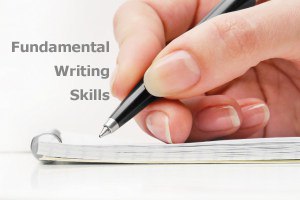Be sure you have developed fundamental writing skills before you progress to more targeted practice. Check to see if you can do the following:
- Learn the conventions of spelling, punctuation and paragraph creation.
- Study the organization of good paragraphs and essays. A good paragraph discusses ONE main idea. This idea is usually written in the first sentence, which is called the topic sentence. In essay
writing, each paragraph should discuss one aspect of the main idea of the essay. - Before you write, think about verb tenses that logically fit your topic. Are you writing about something in the past? Then you might use the simple past, present and past perfect, past continuous—tenses that naturally fit together.
- Read your writing three or four times; each time, check for a different thing. Make a checklist of errors you commonly make (for example: verb tenses, run-on sentences, subject-verb agreement).
- Reread your writing and circle common, uninteresting expressions (for example: get, nice, things, stuff). In your second draft, replace these with stronger words and phrases (for example: obtain, pleasant, objects, possessions). See how many alternate words you can come up with.
- Practice using transitions to show the relationship between ideas. Use words and phrases such as “on the one hand” or “in conclusion” to create a clear structure for your response.
- Practice typing on a QWERTY keyboard, the type of computer keyboard used in English-speaking countries. The name comes from the first six letters in the top row of the keyboard.

